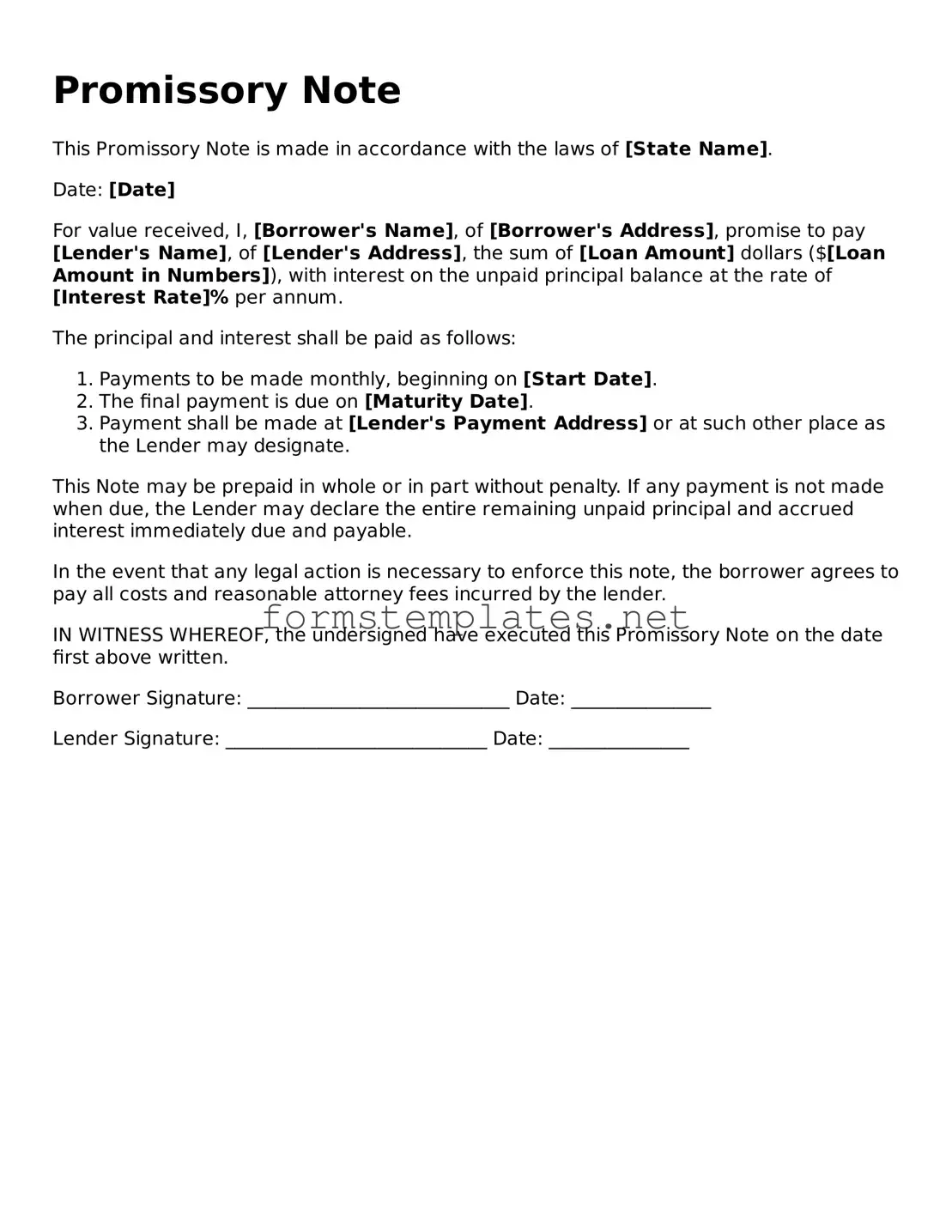Promissory Note
This Promissory Note is made in accordance with the laws of [State Name].
Date: [Date]
For value received, I, [Borrower's Name], of [Borrower's Address], promise to pay [Lender's Name], of [Lender's Address], the sum of [Loan Amount] dollars ($[Loan Amount in Numbers]), with interest on the unpaid principal balance at the rate of [Interest Rate]% per annum.
The principal and interest shall be paid as follows:
- Payments to be made monthly, beginning on [Start Date].
- The final payment is due on [Maturity Date].
- Payment shall be made at [Lender's Payment Address] or at such other place as the Lender may designate.
This Note may be prepaid in whole or in part without penalty. If any payment is not made when due, the Lender may declare the entire remaining unpaid principal and accrued interest immediately due and payable.
In the event that any legal action is necessary to enforce this note, the borrower agrees to pay all costs and reasonable attorney fees incurred by the lender.
IN WITNESS WHEREOF, the undersigned have executed this Promissory Note on the date first above written.
Borrower Signature: ____________________________ Date: _______________
Lender Signature: ____________________________ Date: _______________
